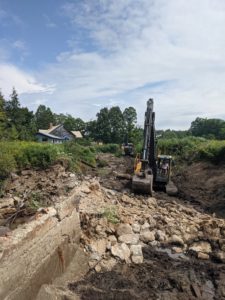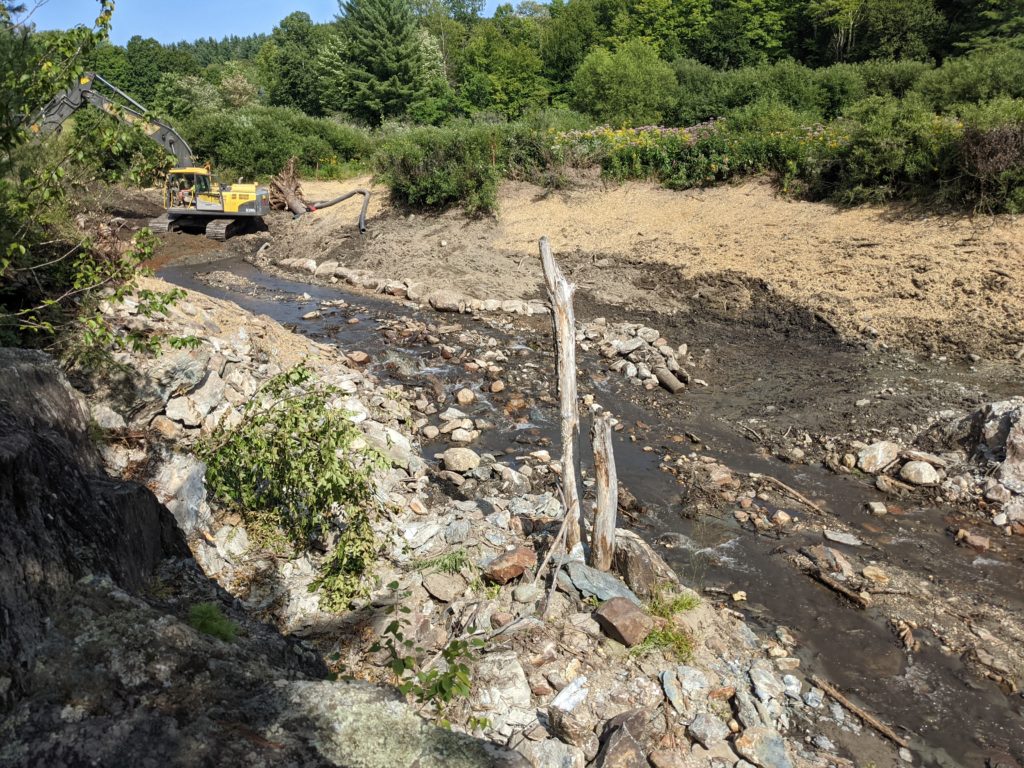In August 2021, the Lake Champlain Basin Program worked with the Franklin County Natural Resources Conservation District to oversee the removal of the Johnsons Mill Dam, located along the Bogue Branch in Bakersfield, VT. After decades of disuse, the stone and concrete dam was in a state of deterioration and recommended for removal by the Vermont Department of Environmental Conservation in 2016. The upstream riverbanks were also stabilized.

Removing the approximately 220-foot wide dam reconnected an estimated 23 stream miles of aquatic habitat in the Lake Champlain Basin for the first time since the early 1800s, when a sawmill was first constructed at the site. The Bogue Branch is a tributary to the Tyler Branch which flows into the Missisquoi River, a transboundary river that enters Lake Champlain in northern Vermont.
“The removal of the Johnsons Mill Dam was a great opportunity to improve water quality, flood resilience, aquatic organism passage, and reduce risk in the Missisquoi Bay watershed,” said Lauren Weston, district manager of the Franklin County Natural Resources Conservation District.
Although an intense Halloween storm in 2019 partially breached the dam, stream flow velocity through the six-foot opening sometimes made fish passage difficult. Restoring the Bogue Branch to a free-flowing state provides access to upstream habitat for native brook trout, categorized as a “species of greatest conservation need” by the Vermont Fish and Wildlife Department. Additionally, The Nature Conservancy’s Vermont Dam Screening Tool assessed the dam as having “high” ecological impact.
The project, initiated by the landowner, serves as a model for future dam removal efforts for the Franklin County Natural Resources Conservation District.
“Working with the landowner who is passionate about environmental conservation made the project a huge success and has inspired efforts to continue to monitor and understand all of the habitat and water quality benefits resulting from the removal of the structure,” added Weston. “We hope to continue to work with landowners in the region to assess their dams and work towards removals based on the many lessons learned from the successful removal of the Johnsons Mill Dam.”
For more information, and to view photos and watch a time-lapse video of the Johnsons Mill Dam removal, see the Franklin County Natural Resources Conservation District’s project webpage.

This project has been funded wholly or in part by the United States Environmental Protection Agency under assistance agreement (LC00A00605) to NEIWPCC in partnership with the Lake Champlain Basin Program.